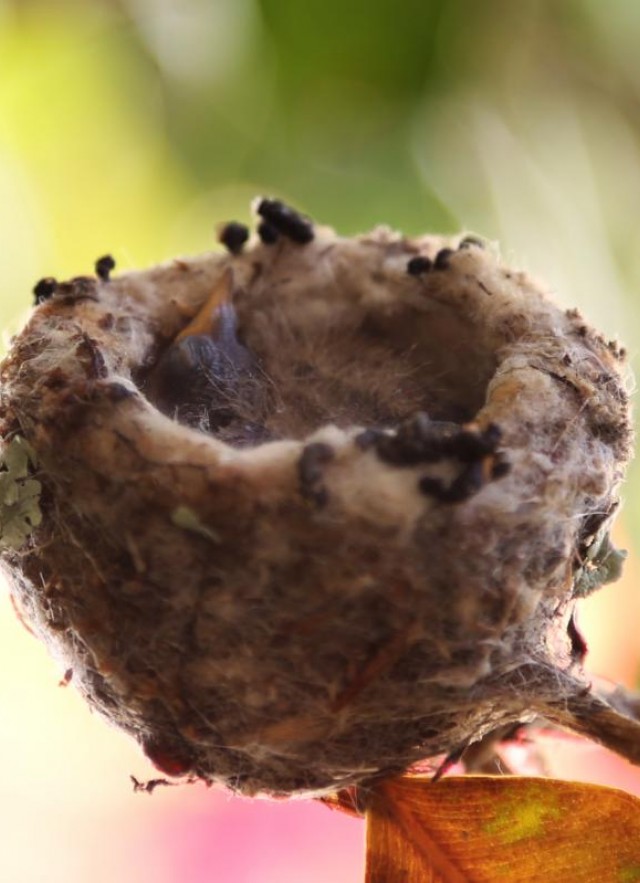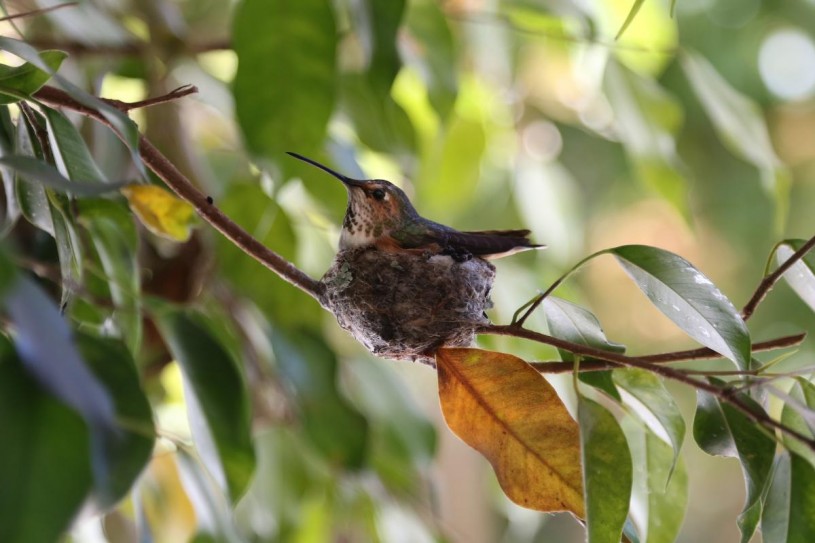
Originally published February 21, 2018

A little Allen's hummingbird buzzed past my head as I walked out of my parents' front door last weekend in Santa Barbara. This isn't the first time I've seen hummingbirds nesting in the potted trees under the eaves of their house, so I had a good idea of where to look for her nest. It was in plain sight and looked like a little ball of lint or a dry leaf in the ficus tree, between five and six feet off of the ground. While she was gone, I took a quick peek inside, and found that she had two fuzzy little babies. Using a long lens on my camera in order to keep my distance, I took some photos of the baby birds.

Hummingbirds are so cool. Often brightly colored, with iridescent feathers that make them look as much like large insects as birds, their wings and hearts beat at an incredible rate, they hover, drink flower nectar with a forked, tube-like tongue, and can fly backward. It is no wonder that our visitors from Africa, Asia, and Europe have been amazed and delighted to see them zipping around our garden, as hummingbirds are not found in those places, being endemic to the Western Hemisphere.
A couple of people who saw my photos seemed surprised that Allen's hummingbirds had hatched this early in the year, so I asked our Collections Manager of Ornithology, Kimball Garrett, if this was in fact an early bird. He told me, "This isn't early at all for Allen's hummingbirds. In the Los Angeles area, where the species is a common year-round resident, these birds routinely build nests and lay eggs as early as December, and January through March is the peak." He added that most Allen's hummingbirds are migratory, arriving here in January and having nests with eggs by mid-February. (Their migratory range is from Oregon to south of Mexico City.) But some Allen's don't migrate at all. In the area around Los Angeles and the Channel Islands, some of the Allen's hummingbirds stay put all year long, and these full-time residents nest even earlier. They usually lay two eggs about two days apart and incubate for 16-17 days. The females do all of the parenting work, and after they hatch, the young fledge (develop feathers and wing muscles sufficient for flight) after 20-22 days in the nest.
Hummingbirds don't just have colorful feathers and behaviors, they also have a surprising number of colorful names in Spanish including: chuparrosa (suck-rose), chupaflor (suck-flower), picaflor, colibrí, zumbador (buzzer), and also the sweetest name in Portuguese: beija-flor, which basically means "flower kisser." Whatever you call them, keep an eye out for their tiny, discreet nests. Remember not to scare the mama bird, and if you're lucky you might see some fuzzy winter babies.